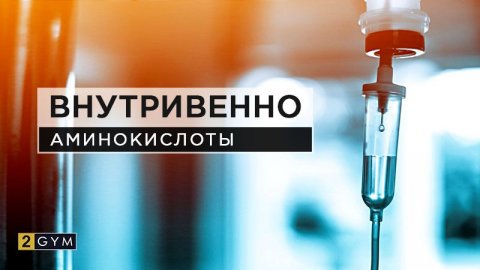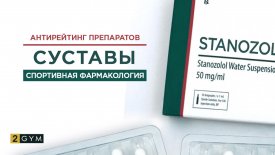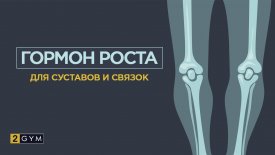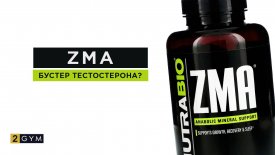Intravenous Amino Acid Infusion
Parenteral (non-oral) nutrition is widely used in medical practice. It is used in cases where a patient cannot take or absorb food orally, or when oral nutrition is insufficient and additional nutritional support is needed.
We will assume that what we receive orally—through regular food and sports supplements—is not enough for us.
Food that enters the bloodstream directly has one major advantage: it is not metabolized in the digestive system, which means we can expect less loss of nutrients.
On the other hand, such food must be pre-prepared for intake: specifically, the protein must be broken down into amino acids.
Most often, amino acid complexes are used for parenteral infusion, which may include vitamins, minerals, carbohydrates, and fatty acids. We are mainly interested in amino acids.
Thus: with intravenous infusion of amino acids, we have the hope that a greater amount will be put to use—utilized for building muscle tissue or repairing damaged tissue.
But here's an interesting thing that might happen: with a significant increase in the level of amino acids in the blood, we may achieve the opposite effect—the synthesis of protein may be slowed down.
Therefore, insulin is usually used in parenteral nutrition. Ideally, something from anabolic steroids as well.
When is the Best Time for Intravenous Amino Acid Infusion?
The best time is immediately after a workout.
Infusions containing high doses of arginine and lysine can be used before sleep to increase growth hormone secretion.
How Often Should Intravenous Amino Acid Infusion Be Done?
Optimally—twice a week, although even just one infusion over the same seven days will definitely yield good results.
If we're talking about recovery (see below), the number of infusions per week can be increased to three.
What Can Be Achieved?
Gains in lean muscle mass are usually very good: we've achieved gains of 3-4 kilograms in about a month.
In addition, there is a significant increase in the body's ability to recover.
So, Can Infusions Be Used for Recovery?
Yes, indeed, intravenous amino acid infusion can help recover much faster.
And not only after a strength training session—actually, not so much after a strength training session as after grueling cyclic training. For recovery after crossfit sessions, it's just perfect!
Intravenous Amino Acid Infusion in Sports
The most extensive study that used intravenous amino acid infusion in athletes was conducted in 1997 in Texas. Patients received a mix of alanine, phenylalanine, leucine, and lysine immediately following their training sessions.
Strictly speaking, the study wasn't really about the advantages of intravenous infusion—the goal was to determine the time frame in which additional amino acids can have the greatest effect. It turned out that it was right after the training session, mostly due to the stimulation of blood flow.
But what makes this study interesting is not the conclusions (which were, actually, quite obvious), but the fact that the participants were active professional bodybuilders.
One of them was simply thrilled with the suggested protocol and acknowledged that even an athlete accustomed to using significant doses of AAS, growth hormone, insulin, could achieve an increase of an additional 30-40 pounds (about 13-18 kg) of muscle mass with the help of intravenous amino acids.
Description of the Procedure
Let's move on to the direct description of the procedure. Initially, insulin is administered intravenously. Don't go too far: you'll definitely need no more than 5 IU of this hormone (start with smaller doses—about 2 IU).
With anabolic steroids, it's simpler: they can be used independently of the infusion. Ideally, you could "load up" with "methane" a couple of hours before the start of the procedure, but in general, just ensure an elevated level of testosterone in the blood.
Then the infusion is set. It should be adjusted so that 250 grams of solution is delivered into the vein over about one hour, possibly one and a half hours. Two hundred and fifty grams of the amino acid solution will generally be sufficient.
It is essential to monitor the onset of hypoglycemia: if even the slightest "shaking" begins, simple carbohydrates (glucose, dextrose) should be added to the infusion. Of course, if carbohydrates are not already included in the amino acid complex (for recovery, it's better to choose complexes with glucose).
Amino Acids Intravenously list of drugs
What to pay attention to? First and foremost, the presence of essential amino acids in the complex and especially BCAAs. Look for leucine: the more, the better.
Secondly, the presence of arginine (actually, not only arginine, but also lysine)—it will help boost growth hormone secretion (in fact, arginine with lysine can be added separately—we often did just that).
Another important point: the presence of accompanying substances—vitamins and minerals. Finally, pay attention to the presence of carbohydrates in the complex.
- Aminosol Neo
- Composition (10%, with minerals and malic acid; amounts indicated per 1000 ml): isoleucine 5 g, leucine 7.4 g, valine 6.2 g, lysine 6.6 g, methionine 4.3 g, threonine 4.4, phenylalanine 5.1 g, tryptophan 2 g, arginine 12 g, histidine 3 g, glycine 14 g, alanine 15 g, proline 15 g, malic acid 150 g, malic acid 9.28 g, sodium glycerophosphate 9.45, calcium chloride 0.735, magnesium chloride hexahydrate 1.02, potassium hydroxide 1.68.
There's a variant of this complex (15%) without minerals and malic acid, but with an increased amount of amino acids. "Aminosol Neo" can be considered an optimal solution.
- Vamin 14
- Composition (1 l): alanine 12 g, arginine 8.4 g, aspartic acid 2.5 g, valine 5.5 g, histidine 5.1 g, glycine 5.9 g, glutamic acid 4.2 g, isoleucine 4.2 g, leucine 5.9 g, lysine 6.8 g, methionine 4.2 g, proline 5.1 g, serine 3.4 g, tyrosine 0.17 g, threonine 4.2 g, tryptophan 1.4 g, phenylalanine 5.9 g, cysteine 420 mg.
- Vaminolact
- Composition (1 l): alanine 6.3 g, arginine 4.1 g, aspartic acid 4.1 g, valine 3.6 g, histidine 2.1 g, glycine 2.1 g, glutamic acid 7.1 g, isoleucine 3.1 g, leucine 7 g, lysine 5.6 g, methionine 1.3 g, proline 5.6 g, serine 3.8 g, taurine 300 mg, tyrosine 500 mg, threonine 3.6 g, tryptophan 1.4 g, phenylalanine 2.7 g, cysteine 1 g.
- Infesol 100
- Composition (1 l): alanine 15.5 g, arginine 9.66 g, aspartic acid 1.91 g, acetyltyrosine 2 g, acetylcysteine 0.673 g, valine 5 g, histidine 3.3 g, glycine 7.55 g, glutamic acid 5 g, isoleucine 5.85 g, potassium chloride 3.355 g, calcium chloride dihydrate 0.735 g, leucine 6.24 g, lysine acetate 10.02 g, magnesium chloride hexahydrate 1.017 g, methionine 4.68 g, sodium acetate trihydrate 3.456 g, sodium chloride 0.625 g, ornithine chloride 2.42 g, proline 7.5 g, serine 4.3 g, threonine 5 g, tryptophan 2 g, phenylalanine 5.4 g, malic acid 3 g.
- Moriamin S-2
- Composition (500 ml): isoleucine 2.75 g, leucine 6.15 g, lysine 11.15 g, methionine 3.55 g, phenylalanine 4.35 g, threonine 2.7 g, tryptophan 0.9 g, valine 3.05 g, arginine 4 g, histidine 2 g, glycine 5 g, D-sorbitol 25 g.























Log in with ( Sign Up ? )
or post as a guest
Be the first to comment.